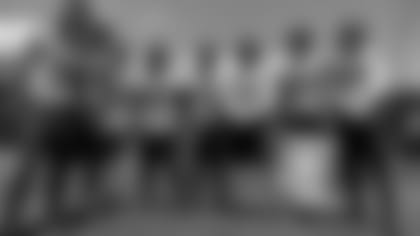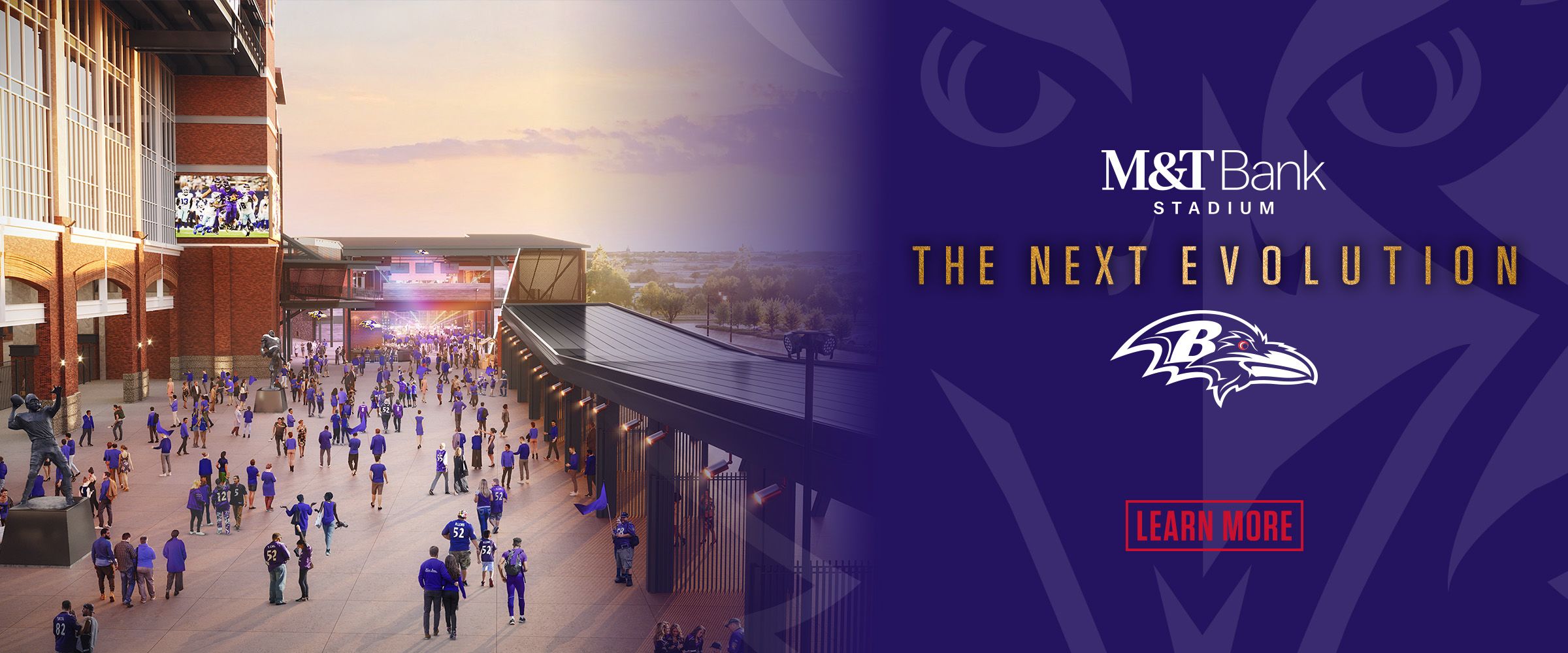Flacco Isn't The One Who Regressed
On Monday, a reporter asked John Harbaugh whether his Super Bowl-winning quarterback has "regressed?"
The Ravens head coach was resolute in his reply.
"I would never use that term," he said.
ESPN's Jamison Hensley wouldn’t use that term either.
Sure, Harbaugh, Hensley and any fan can look at the stats and see they are not up to Flacco's usual standards. He ranks No. 27 in passer rating, No. 25 in completion rate, No. 30 in yards per attempt and No. 25 in interceptions.
The difference between Harbaugh and Hensley, however, is that Hensley has more freedom to explain what he thinks is really going on because it doesn't shine a positive light on other areas of the offense. Hensley acknowledges that Flacco has struggled and says that he isn't the same caliber quarterback as Aaron Rodgers, but …
"The knee-jerk reaction is to say Flacco has taken a step backwards, but that doesn't tell the whole story," Hensley said. "It's Flacco's supporting cast that has taken a bigger step backwards."
Hensley sees a similar thing happening in 2015 that happened in 2013 when the Ravens traded away wide receiver Anquan Boldin and didn't replace him. That year, Flacco threw a career-high 22 interceptions.
This year, the Ravens allowed wide receiver Torrey Smith to walk. They made contingency plans by drafting Breshad Perriman in the first round, but he hasn't played at all this season because of a knee injury. There's also the loss of Offensive Coordinator Gary Kubiak along with the only experienced tight end in Owen Daniels.
Hensley doesn't feel Flacco has much to work with this season, saying Steve Smith Sr. is a "36-year-old receiver who has four microfractures in his back," Kamar Aiken and Justin Forsett are "journeymen," Marlon Brown is an undrafted free agent who has gone 20 games without a touchdown and Crockett Gillmore is a second-year tight end with just 10 catches on his resume before 2015.
Add it all up, and Flacco is throwing interceptions again, currently tied for fifth most in the league with seven.
"So, why did the Ravens pay him $120 million?" asked Hensley. "Flacco has proven he can lead a team deep into the playoffs and even to a Super Bowl title when given the right weapons. The same can't be said for quarterbacks who have had much better talent around them and still have struggled in the playoffs: Matt Ryan (1-4 in postseason), Tony Romo (2-4), Andy Dalton (0-4) and Jay Cutler (1-1).
"Flacco hasn't been on top of his game, and he has accepted his share of the responsibility of 'stupid' mistakes. But to say he's regressed doesn't take into account the current state of the Ravens offense."
In the CSN video below, Rob Carlin and Brian Mitchell also debate how much Flacco is to blame for the Ravens' passing woes.
Trade Requests Changing
After the first couple weeks of the season, outsiders were clamoring for the Ravens to make a trade that would allow them to acquire talent to help turn around the season.
Now that Baltimore's playoffs chances are slim, trade requests are still being made, but now fans and media are asking whether the Ravens will trade away talent to stockpile draft picks and build for the future. The other idea is to trade Smith Sr. to a team with better playoff chances so he can finish his career on a higher note.
The Baltimore Sun's Jeff Zrebiec doesn't see any trades happening.
"The NFL trade deadline is two weeks away and presumably, the Ravens might have a piece or two that will interest other teams," he wrote. "However, it's not like the Ravens are looking to orchestrate a roster overhaul."
You'll see such moves happen frequently in Major League Baseball, but the compensatory system makes it so NFL teams are less inclined to make trades for picks. And General Manager Ozzie Newsome has mastered that system.
"[T]he compensatory pick that the organization would get for losing the player in free agency might be better than what they'd get from another team in a trade," Zrebiec wrote. "That's just one of several reasons why I wouldn't expect much activity."
The Difference Between 2014 And 2015 Ravens Defenses
With the losses of Haloti Ngata, Terrell Suggs and Pernell McPhee, there's been commentary about the Ravens' lacking pass rush.
Interestingly enough, however, the drop-off really isn't that big from last year, when the Ravens enjoyed one of their best pass-rushing efforts in franchise history with a monster trio of Suggs, McPhee and Elvis Dumervil.
Grantland looked into the numbers, and in 2014, the Ravens pressured opposing quarterbacks on 25.5 percent of dropbacks and sacked them on 7.4 percent. This year, they're pressuring the opposition on 26.1 percent of dropbacks and sacking them 7.1 percent of the time.
Those numbers are virtually identical.
But there's a big difference in how the Ravens are getting pressure, and it's having a domino effect that is hurting the defense at large.
"[T]hey're forced to throw extra resources toward the pass rush to generate those figures," wrote Grantland's Bill Barnwell.
Defensive Coordinator Dean Pees didn't need to blitz as often last year as he is now in order to get to the quarterback. He sent extra pressure on 28.5 percent of dropbacks last year, and is sending it on 35.6 percent this year.
"There's nothing wrong with blitzing if you can back it up," wrote Barnwell.
"While Baltimore's hopes of a deep playoff run unraveled at the hands of an injury-riddled secondary last year, this was supposed to be a healthier, deeper unit. … That hasn't worked out."
Barnwell says the need for more blitzes and even deep plays allowed by the secondary are survivable problems, citing teams, including the Ravens, who have overcome those issues before.
There is a bigger problem that is dooming the defense
"The biggest difference between this year's terrible Ravens defense and last year's above-average Ravens defense, then, isn't that they can't get to the quarterback or that they're giving up big plays," wrote Barnwell. "It's that they can't get off the field.
"Last year, the Ravens allowed opposing teams to convert 40.3 percent of their third downs, which was 17th in the league, essentially league-average. This year? That figure is up to 47.8 percent, and only the Jaguars (an even 50 percent!) have been less effective on third down. Nobody's faced more third downs (92) than the Ravens."
Quick Hits


















